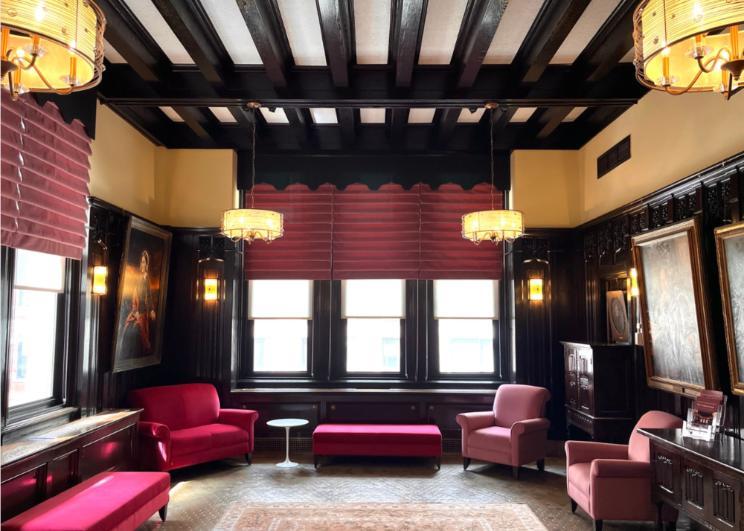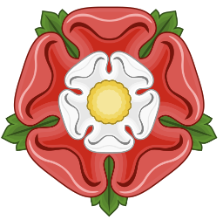The Tudor Room
Restoring a Grand Historic Landmark
Introduction
In December 2020 a proposal with great promise germinated in the quiet halls of Teachers College, Columbia University. What better time to consider a renovation project whose impact would be felt by future generations? Thanks to Katie Embree, then Vice Provost, who conceived the idea, we put our heads together, researched the Tudor Dining Room, and ultimately received the green light from both Administration and the Myers Foundations.
We began thinking a lot about about color ... in a manner of time I found myself biking around town after hours in pursuit of any number of paint swatches: purple, blue, pink, red, green, all shades, all colors... only to fish out my daughter's color wheel from the "art" closet. Confirming that certain colors were not meant to be mixed; others complimented each other; dark versus light tones, yes ... but still finding the question: What effect did we want to achieve in a space that was a little cold, pretty under used, and in dire need of some tender loving care? After much reflection, we turned to John Olsen, Senior Project Manager, who recommended off white to cream, plain and simple. We never returned to the color wheel, but proceeded with coordinated design and refurbishment, finding that the TC standard of color offered greater flexibility with seating, accent tables, lighting, portraits, and a carpet. Work continued diligently on wood, tiles, and windows. Floor to ceiling, furniture to furnishings, we aspired to softer lines, warmth, beauty, art, and heritage, while adding in a few modern touches.
The project team comprised Katie Embree, Vice President for Planning and Strategy, Chief of Staff to the President, and Secretary of the College; Jennifer Govan, Library Director and Senior Librarian; Linda Colquhoun, Senior Director of Stewardship and Donor Relations; John Olsen, Senior Project Manager, Plant Facilities; Iraida Torres-Irizarry, Operations Manager (Library); and Sijia (Scarlett) Cheng, Library Associate for Art and Design.
Historic Context
In 1908 Helen Kinne, Professor of Household Arts, and Arthur Wesley Dow, Professor of Fine Arts, conceived of a unique educational space at Teachers College, Columbia University. Of English and Welsh descent, Helen Kinne was described by Teachers College Welfare Director Lucetta Daniell as being “an instinctive homemaker”, in that “any room that she occupied, however temporarily, took on immediately a warm atmosphere of cosy homelikeness.” American painter, printmaker, and photographer Arthur Wesley Dow had become President of the Eastern Art Association and in 1908 a delegate to the International Art Congress; his courses at Teachers College infused model exercises in composition that applied design and craft techniques from many parts of the world. Kinne and Dow’s practical and creative plans for 271 Grace Dodge Hall would not only be three years in the making, but significant for decades to come.
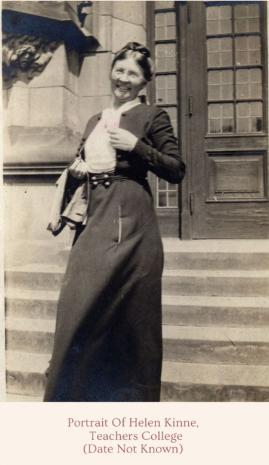
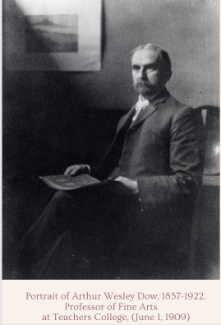
The Tudor Dining Room opened in 1911 as “a dining room laboratory with facilities for both family and lunch-room problems and service, and for catering.” Managing behavior or codes of conduct at the table was encouraged through a proper, orderly space for dining, which married an interesting design couple: medieval English architecture, or dark wood paneling and high exposed beams, with unique elements of the Arts and Crafts Movement: Grueby honeycomb tiling, mission style furniture, and lantern sconces and candelabra chandeliers. The Tudor Room, thus, was beautifully situated to facilitate etiquette and table service for meals prepared by students, notably all women, enrolled in Teachers College’s programs for the domestic and household arts, including cooking, sewing, and laundering.
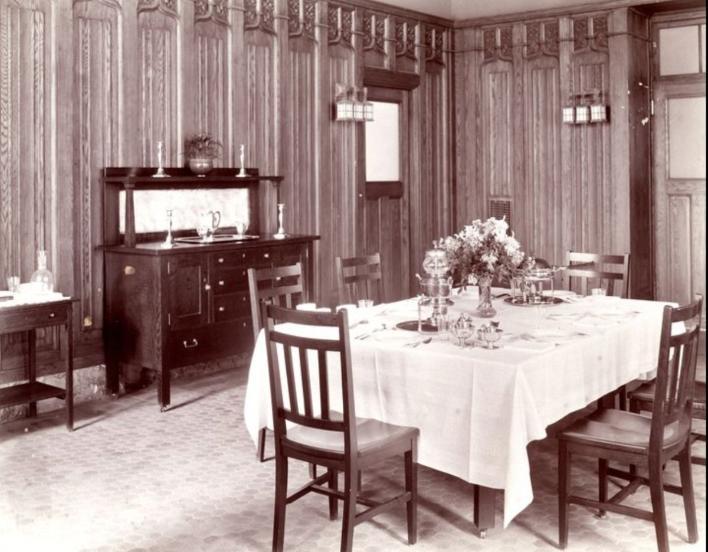
Image: Dining Room Laboratory. 271 Dodge Hall. Teachers College. (circa 1911), Courtesy of Teachers College, Columbia University
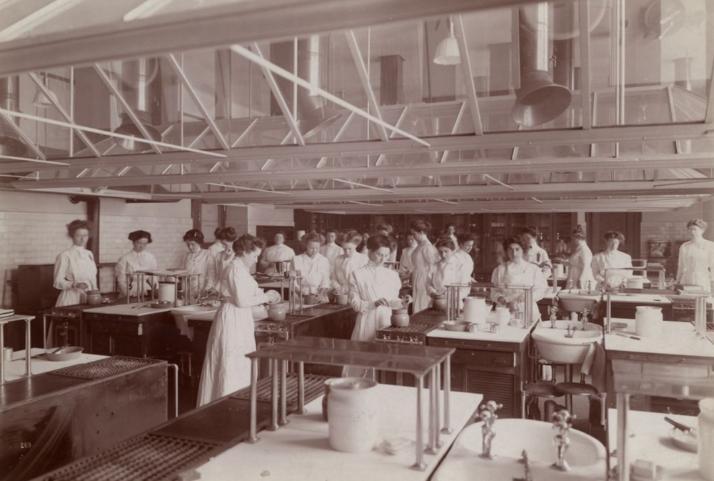
Image: Dodge Hall. Cooking Laboratory With Students. Miss J. Marshall, Instructor, at Extreme Right. (1910-1912). Courtesy of Teachers College, Columbia University.
Use of the Tudor Dining Laboratory quickly expanded beyond its intent as an educational space or household lab; 271 Grace Dodge successfully attracted the College’s growing social needs and special functions, and these activities were indicative of its creative development as an innovative leader in education, both in and outside the classroom and across the lifespan.
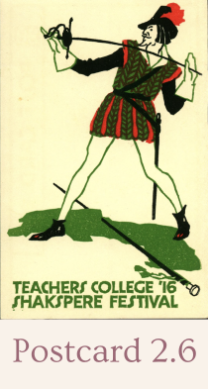
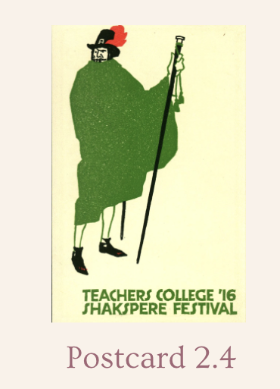
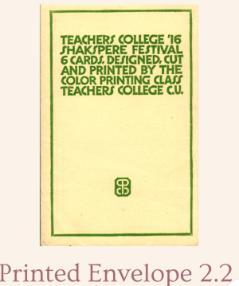
There was the Shakespeare Festival in 1915 (and later years), for which Dow’s students created original woodblock postcards and an Elizabethan Banquet was spread. The luncheon meetings of the Women’s Discussion Club met regularly in the Tudor Room, hosting in 1916 such eminent speakers as Dr. Warren Wilson on Rural Education; Dr. Frank McMurry, Women’s Education; Dr. Ellwood Cubberly, the Church in Rural Districts; Dr. Milo Hillegas, Women in Supervision; Dr. Frederick Bonser, Industrial Arts in the Grades; and Dr. John Dewey, Private and Parochial Schools in a Democracy. That same year there were over thirty functions with “perfectly appointed tables” for afternoon teas, receptions, buffet suppers, luncheons, and suppers, driven by the success of the Food and Cookery Department which utilized three additional dining room classrooms in the Household Arts Building (known today as Macy Hall but deplete of cooking labs). In the Spring of 1917 the Dean and Mrs. James Earl Russell received the Columbia Dames and their husbands, with refreshments in the Tudor Room most delightfully filled with daffodils.
The Arts and Crafts decor symbolized the reformation of household life through simple, but beautifully designed, hand-crafted objects and decoration, in the spirit of morally uplifting women, the predominant students of Teachers College, and society, at large, in the moral virtues of domestic education. During the postwar years, women at Teachers College who taught and studied cooking, nutrition, and other aspects of household management began receiving recognition. The bronze plaque inside Tudor to the right of the interior door honors fourteen female students in Home Economics, from Lila Levine, in 1946, to Ila I. Meyers, in 1961, who earned Borden Foundation awards for their “high academic achievement and professional promise.”
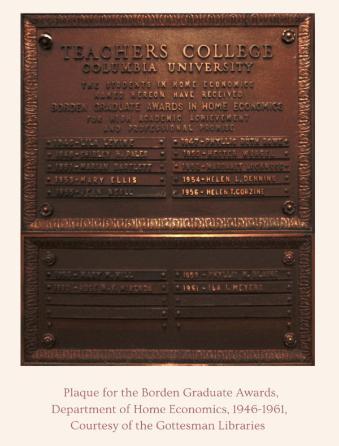
Over a century after plans were first laid by Helen Kinne and Arthur Wesley Dow, who would have thought that this grand dining room laboratory would become the perfect centerpiece for art and intellectual discourse, where meals unite and design continues to inspire?
Art Conservation with Taste
In 1977, "Friends of the Tudor Dining Room" comprised a committee that researched that space with a view to preserving it as a Teachers College landmark. The committee met with the College architect, Mr. John Young, and others to plan appropriate use for "special seminars, doctoral orals, administrative meetings, small luncheons or receptions, but not regularly scheduled classes". Their hope was to repair and restore furnishings, install appropriate electrical hardware and light fixtures, rearrange furnishings, and “so forth”. They cited potential interest by donors (Letter to Lawrence Cremin from T. Leemon).
Twenty-one years later, Andrew Dolkart, author of Morningside Heights: A History of Its Architecture and Development, wrote, "The woodwork, wall lamps, and floor survive in what is now known as the Tudor Room" (p.434, N190. Ch. 6, Building for the Mind and Spirit.) Dolkart’s significant research on the beauty of the university campus, including the architectural history of Teachers College, inspired reconsideration of needs.
In 2020-2021, a project team at Teachers College researched possibilities and approached the Myers Foundations with a plan to restore the Tudor Room to its original splendor. With an award of $65,000, restoration and refurbishment began in February 2021 and was completed in March 2022. Steeped in historical and architectural significance, 271 Grace Dodge is well suited to facilitate creativity, discussion, thought and experience through the arts -- ideals that align closely with the Myers Foundations’ mission and through which Teachers College has successfully completed art and art education initiatives for developing the Gottesman Libraries’ art and art education book collections; conserving collections of artwork; and exhibiting commissioned artwork.
Renovation
The Tudor Room features many unique architectural and design details, making it a key part of Teachers College history and a New York City landmark worthy of restoration and special use. Its refurbishment includes the restoration of dark wooden wall paneling and high, exposed ceiling beams, typical of Tudor England; Grueby amber ceramic floor tiling in matt finish, representative of Arts and Crafts; rose marble skirting, a luxurious touch ; and large windows, offering plentiful natural light. Two original wooden cabinets and a large wooden buffet also were refurbished to provide practical storage and serving space.
Furnishings
Refurbished lighting is represented by four large Joia chandeliers in Peruvian gold; eight Atterbury Venato de Oro art glass sconces with blue rosettes, a color symbolic of Teachers College; and several small spotlights placed discreetly in the wooden beams to illuminate the hung portraiture.
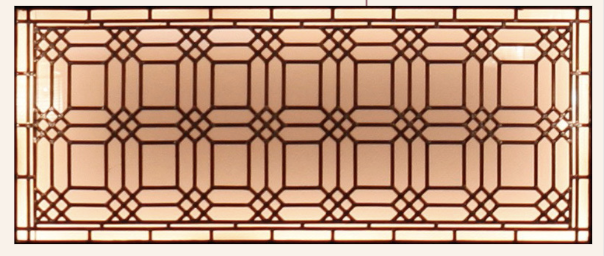
An antique handmade glass and ironwork panel from the Library’s archives displays above new, fireproof, wooden entrance doors; it matches the glass inserts in Everett Library Cafe and Everett Lounge, and it is visible only from inside the Tudor Room where it is illuminated from within a custom case. The Tudor Room contains both full length roller shades in decorative cream fabric to protect the historical artwork, as well as Mayer Gem Rose shades, upholstered Roman shades in half length for more decorative purposes.
Thoughtfully designed with floral and botanical motifs, the 9'3" x 12'6" Kismet area rug is made in Turkey. Camel is the predominant color, complemented by delicate white roses, lilies of the valley, and other beautiful blue and golden flowers.
JSI Regal furniture in traditional design comprises: 2 soft benches, 1 small loveseat, and 4 armchairs in plush Mayer Gem fabrics of lingonberry and rose, colors reflective of the Tudor Rose, the traditional floral heraldic emblem of England. There are 2 low rise round Saarinen Carrara marble satin finish coffee tables situated near the loveseat and benches. Soft seating accommodates a total 12 persons; additional black folding chairs may be arranged, as well as mobile technology, for a seating capacity of 20 persons.
Artwork
The artwork in the Tudor Room comprises seven framed historical oil portraits; one modern framed acrylic portrait; and one photographic portrait of leading faculty, administrators, and pioneers who influenced the history and development of Teachers College, among them:
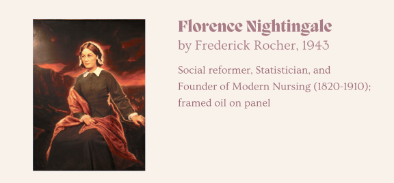
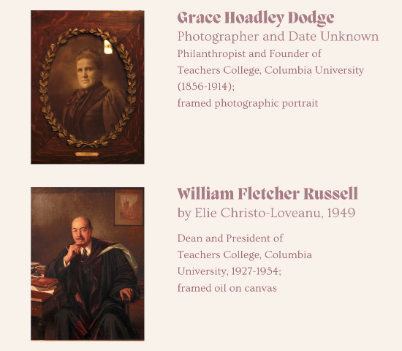

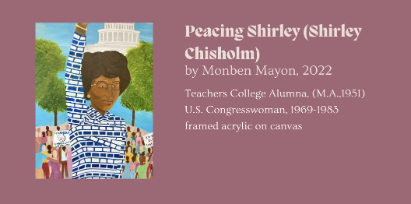

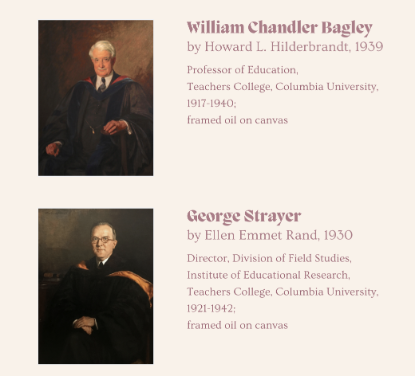
These works by prominent artists supplement additional framed portraiture on permanent display in 104b Russell Hall, the closed collections reading room of the Gottesman Libraries, and 109 Zankel Hall, the Elliot and Roslyn Jaffe Trustees Room.
A plaque outside 271 Grace Dodge to the left of the exterior door summarizes the historical context of the room and draws attention to the generosity of the Myers Foundations who funded its restoration.
Summary
The renovated Tudor Room presents an ideal shared space for art talks and other art and art education events, including those pertinent to the history of Teachers College, its architecture and design. It offers warm and comfortable space for special meetings of the College and serves as a permanent gallery for some of Teachers College’s most prized oil portraits which have been restored and archived through continuing support of the Myers Foundations.
Home to restored historical portraiture, select art talks, and other special meetings and functions, the Tudor Room is a grand historic landmark which continues to be cherished and used for special educational purposes. Helen Kinne and Arthur Wesley Dow were practical and fore thinking, deeply engaged in relevant, innovative pedagogy which shaped enduring philosophy and practice. Said former Teachers College student and modernist artist Georgia O’Keeffe under the tutelage of Professor Arthur Wesley Dow, “This man had one dominating idea… to fill space in a beautiful way and that interested me.”
Image: Tudor Rose, by Sodacan, Courtesy of Wikimedia Commons
References
Brandon, H.C. “Industrial Education: The Cost of Industrial Education in the United States: A Study of Fifty Typical Schools”. Teachers College Record. Volume 12. Number 4, 1911, p. 44-61.
Departmental Notes. “College News and Departmental Notes: The Death of Professor Helen Kinne. Teachers College Record. Volume 19. Number 2, 1918, p. 198-199.
Departmental Notes. “College News and Notes”. Teachers College Record. Volume 16. Number 5, 1915, p. 81-101.
Departmental Notes. “College News and Notes”. Teachers College Record. Volume 17. Number 3, 1916, p. 284-286. .
Departmental Notes. “College News and Notes”. Teachers College Record. Volume 17. Number 3, 1916, p. 292.
Departmental Notes. “College News and Notes”. Teachers College Record. Volume 18. Number 2, 1917, p. 189.
Dolkart, Andrew. Morningside Heights: A History of Its Architecture and Development. New York: Columbia University Press, 1998.
Kinne, Helen. “Equipment for Teaching of Domestic Science: The Rooms”. Teachers College Record. Volume 10. Number 3, 1909, p. 5-12.
Kinne, Helen. “Equipment for Teaching of Domestic Science”. Teachers College Record. Volume 10. Number 3, 1909, p. 13-45. .
Leemon, T. Letter to Dr. Lawrence Cremin From the Friends of the Tudor Room. April 17, 1977. Archives of Teachers College, Columbia University.
Kuh, Katherine. The Artist’s Voice: Talks With Seventeen Artists. New York: Harper & Row, [1962].
Wygant, Foster. A History of the Department of Fine and Industrial Arts of Teachers College, Columbia University. Teachers College, Columbia University, 1959.
Please note that an art tour and reception to celebrate the restoration and refurbishment of the Tudor Room, including the unveiling of the recently installed, Peacing Shirley, by 2022 commissioned artist Monben Mayon, will take place on Thursday, June 29th, from 4-5pm.
